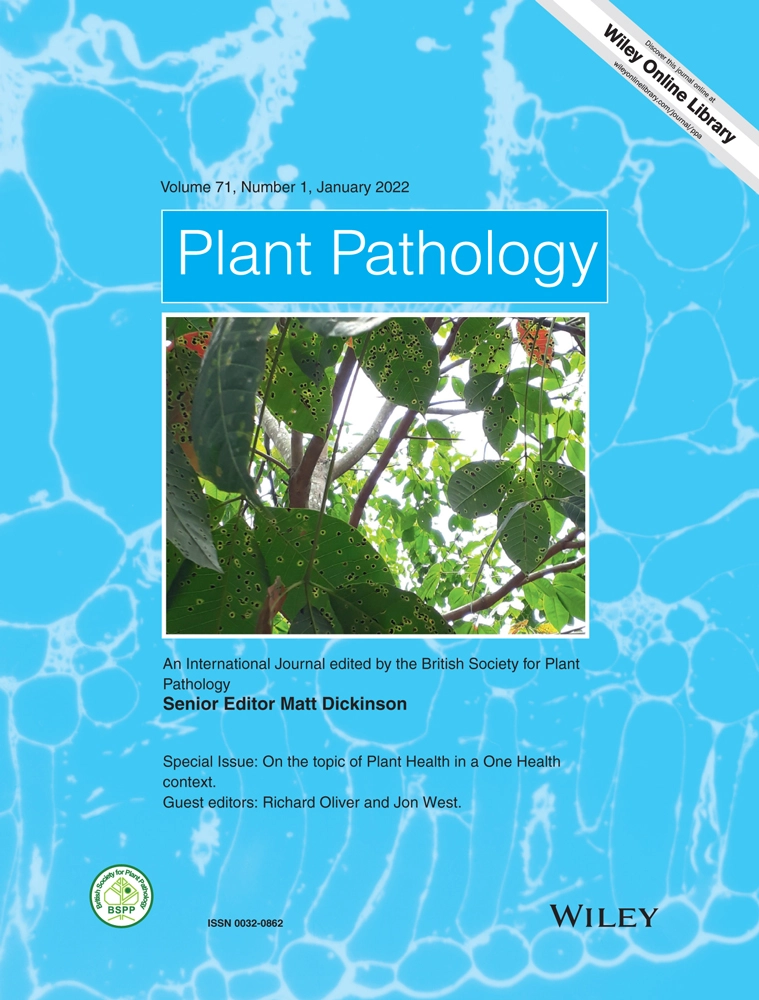Ver ítem
- xmlui.general.dspace_homeCentros e Institutos de InvestigaciónCIAP. Centro de Investigaciones AgropecuariasInstituto de Patología VegetalArtículos científicosxmlui.ArtifactBrowser.ItemViewer.trail
- Inicio
- Centros e Institutos de Investigación
- CIAP. Centro de Investigaciones Agropecuarias
- Instituto de Patología Vegetal
- Artículos científicos
- Ver ítem
Cassava common mosaic virus infection affects growth and yield components of cassava plants (Manihot esculenta) in Argentina
Resumen
Cassava is an important crop with great economic and social significance in many countries. Most of its biomass is usable: storage roots can be destined for industry or fresh consumption, leaves are a source of protein, vitamins, and minerals, and stems can be used as propagation material. Due to its vegetative propagation, cassava yield is greatly constrained by viral diseases. Cassava common mosaic virus (CsCMV), one of the most widely spread viruses in
[ver mas...]
Cassava is an important crop with great economic and social significance in many countries. Most of its biomass is usable: storage roots can be destined for industry or fresh consumption, leaves are a source of protein, vitamins, and minerals, and stems can be used as propagation material. Due to its vegetative propagation, cassava yield is greatly constrained by viral diseases. Cassava common mosaic virus (CsCMV), one of the most widely spread viruses in Latin America, is the only cassava-infecting potexvirus able to cause disease in a single infection: cassava common mosaic disease (CCMD). Here, we evaluated the effect of an Argentinian strain of CsCMV on several agronomic traits. Field trials were established in north-eastern Argentina for three successive cropping seasons, 2016/17, 2017/18, and 2018/19. CsCMV presence was confirmed by PCR or ELISA tests in mechanically inoculated cassava plants. The evaluated traits were plant height (PH), total fresh weight (TFW), shoot fresh weight (SFW), diameter and FW of tuberous root per plant (TRD and FWTR), FW of each individual tuberous root (FWiTR), length and number of tuberous roots (TRL and TRN), harvest index (HI), and estimated yield of tuberous root (EY) in both infected and noninfected plants. Significant yield losses were recorded in infected plants. The most affected traits were EY and FWTR (both showing 44.3% of losses), followed by TFW, SFW, TRN, and FWiTR (37.8%, 33.5%, 29.9%, and 24.8% of losses, respectively). These losses are extremely high for Argentina, where this crop provides food security and demand for the raw material is unsatisfied.
[Cerrar]

Autor
Collavino, Agostina;
Zanini, Andrea Alejandra;
Medina, Ricardo;
Schaller, Silvia;
Di Feo, Liliana Del Valle;
Fuente
Plant Pathology (First published: 29 November 2021)
Fecha
2021-11-29
Editorial
Wiley
ISSN
0032-0862
1365-3059 (online)
1365-3059 (online)
Documentos Relacionados
Formato
pdf
Tipo de documento
artículo
Proyectos
(ver más)
INTA/2019-PD-E4-I090-001/2019-PD-E4-I090-001/AR./Análisis de patosistemas en cultivos agrícolas y especies forestales. Caracterización de sus componentes
Palabras Claves
Derechos de acceso
Restringido
 Excepto donde se diga explicitamente, este item se publica bajo la siguiente descripción: Creative Commons Attribution-NonCommercial-ShareAlike 2.5 Unported (CC BY-NC-SA 2.5)
Excepto donde se diga explicitamente, este item se publica bajo la siguiente descripción: Creative Commons Attribution-NonCommercial-ShareAlike 2.5 Unported (CC BY-NC-SA 2.5)

